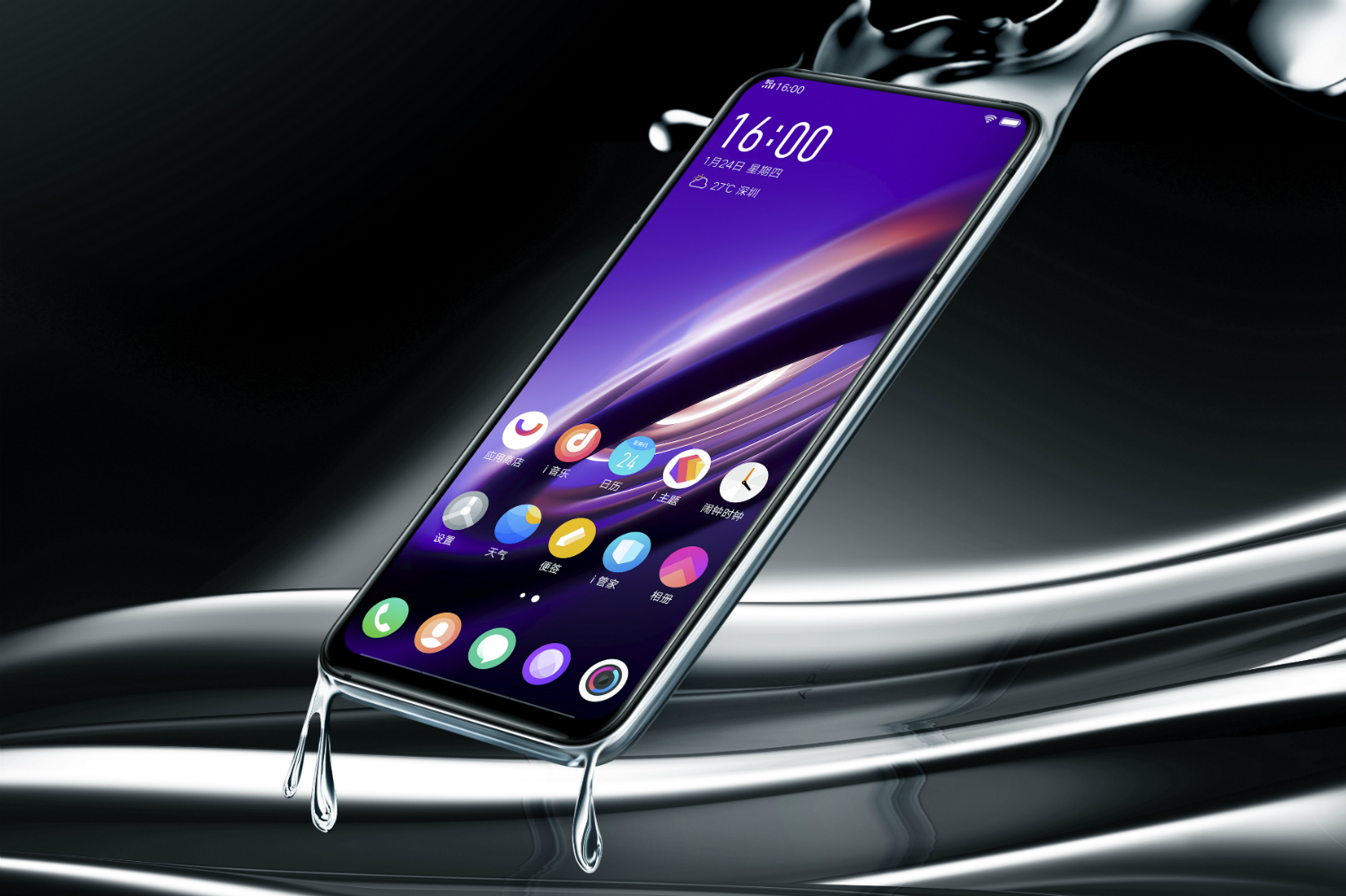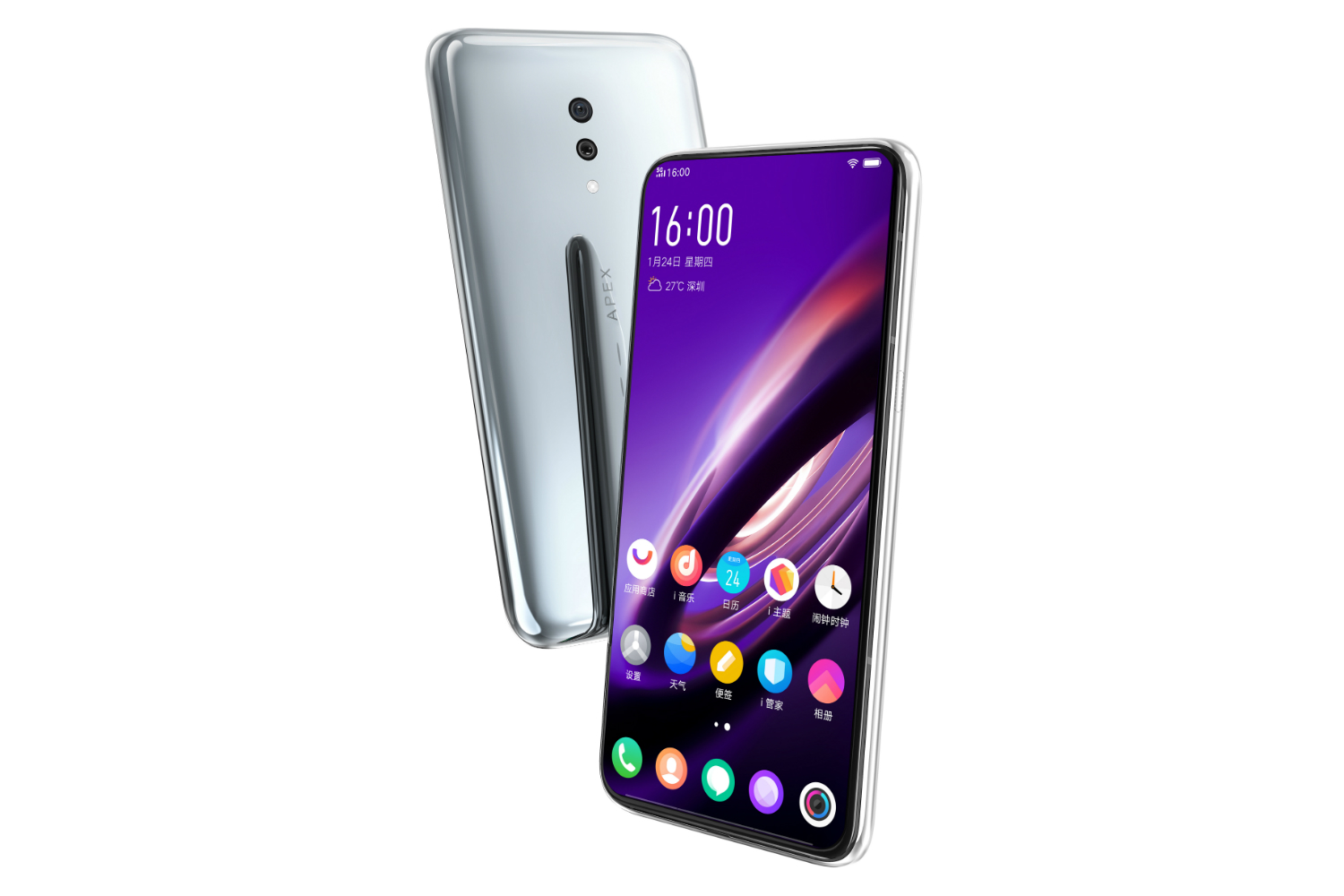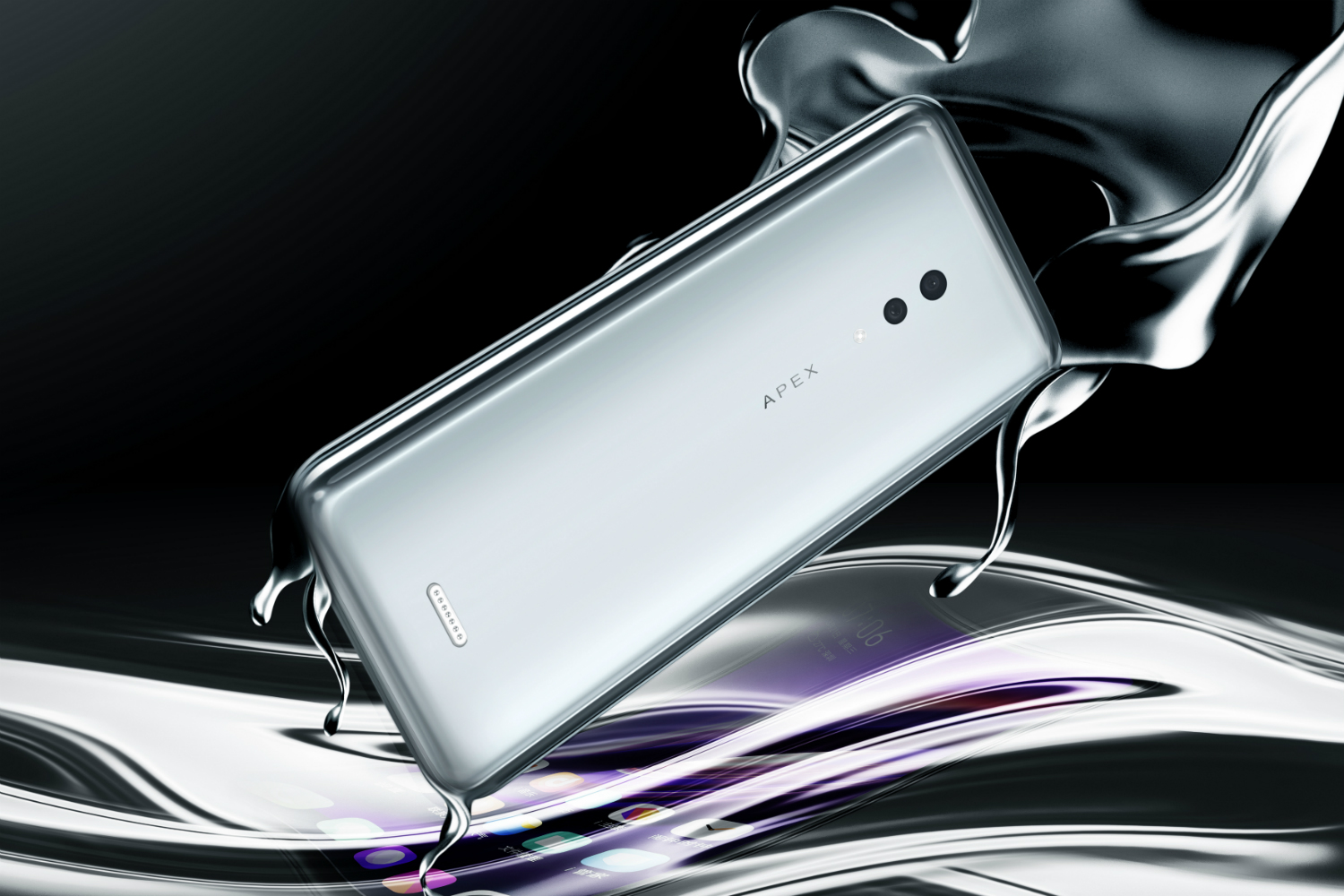Chinese smartphone manufacturer Vivo has kicked off 2019 with a device that it believes will show some of the big mobile design trends of the year, but there’s not a fold or flex in sight. Instead, the Vivo Apex 2019 is a minimalist smartphone that omits many of the most common features on a phone today, including USB ports, SIM trays, buttons, speakers, and even the front-facing camera.
Before we get to that, let’s talk about one of the big new features: The all-display fingerprint sensor. The screen on the Vivo Apex 2019 is all one big fingerprint sensor, rather than you being forced to press one particular spot on the screen to unlock the phone. When your finger gets close to the screen, pixels will light up to help increase accuracy and reliability. Because of the wide expanse of the screen and the sensor, you’ll be able to quickly and securely open apps directly from the lock screen too.
The screen is housed in an unusual, and very futuristic body, which Vivo calls a Super Unibody. It’s made from glass and if you look closely at the photos, you can see the edges are quite thick, but with an almost translucent finish. The thicker edges may not help much in a fall — it is glass, after all — but they do contain capacitive buttons instead of physical keys. Vivo’s own Touch Sense technology promises to understand where and how you’re interacting with the phone’s frame, so you’re not plagued by ghost-touches when simply holding the device.
Specification and the Apex 2019’s future
What else? The screen is also the phone’s speaker, but the microphone is still inside the phone’s body and requires a tiny pin-hole to operate. This is the only external blemish on the otherwise smooth frame and body. Charging is conducted with a magnetic connector, which also enables data transfer, found on the rear of the phone rather than on the base. Finally, there’s no SIM tray and the Apex 2019 uses an eSIM instead.
Vivo anticipates the specification to include a 5G modem, a Snapdragon 855 processor, 12GB of RAM, and 512GB of internal storage space. The dual-lens camera on the back could consist of 12-megapixel and 13-megapixel sensors. Why no front-facing camera? The Vivo Apex 2019 is a concept phone, and therefore a showcase of specific features, rather than a complete picture of a future release.
This isn’t the first time Vivo has showcased a concept phone in such a public way. Last year it showed the original Vivo Apex at Mobile World Congress, where we tried out a larger-than-usual fingerprint sensor — a precursor to the Apex 2019’s full-screen sensor — and saw the fun pop-up selfie camera too. The Vivo Apex eventually went on to become the Vivo Nex S. It’s reasonable to imagine the Apex 2019 will evolve into a phone we can buy eventually too.
The minimalist approach to phone design is also one adopted by Vivo competitor Meizu, which showed the equally button-free Meizu Zero this week. The Vivo Apex 2019 will be shown at Mobile World Congress at the end of February, and we’ll be there to get a closer look at this exciting concept.






